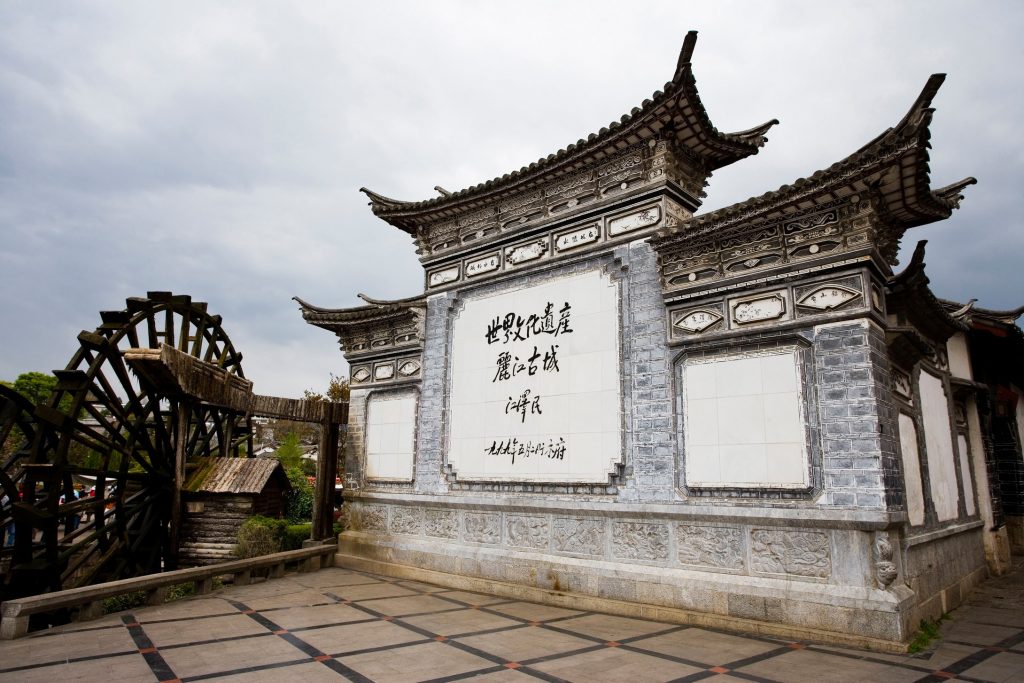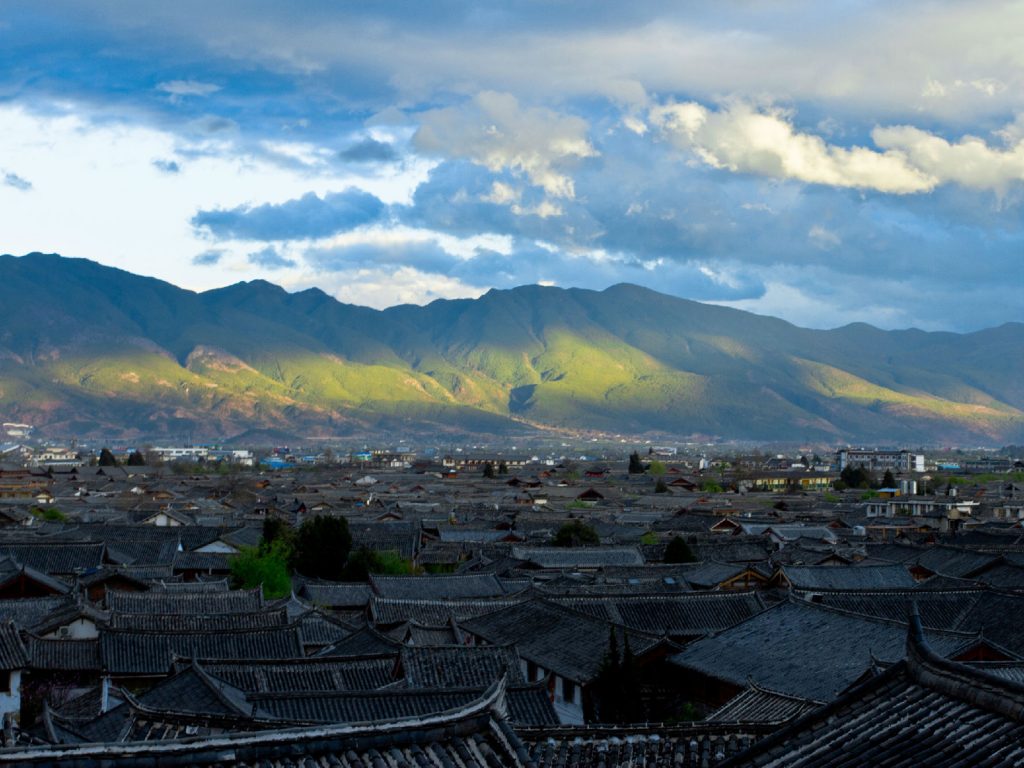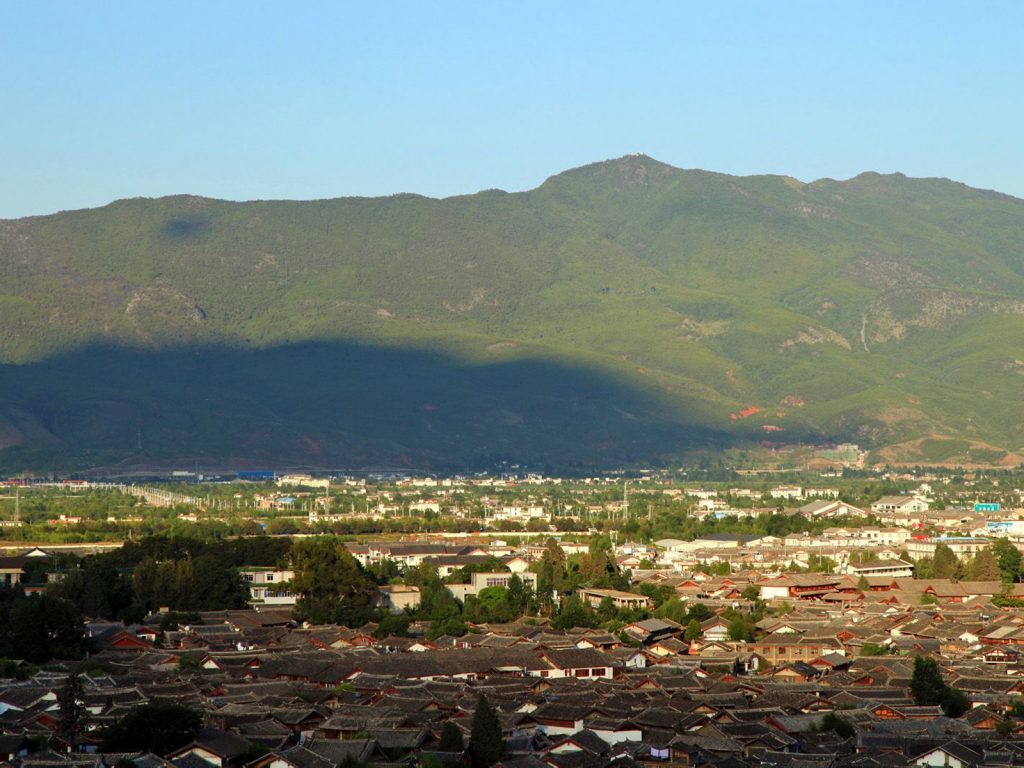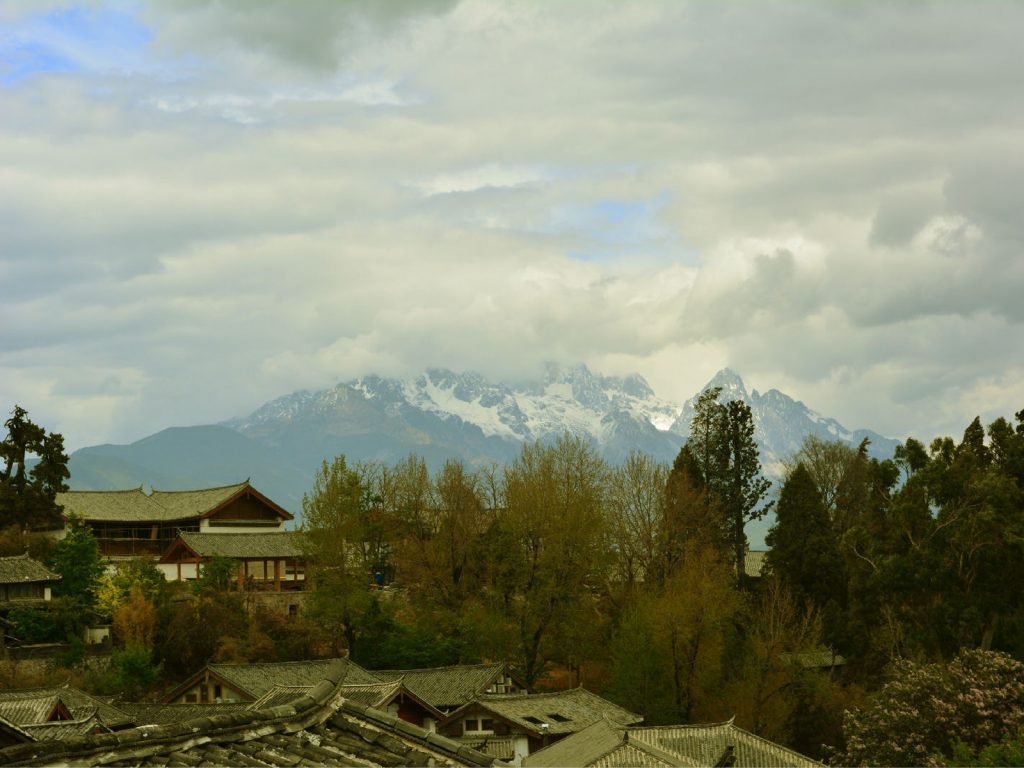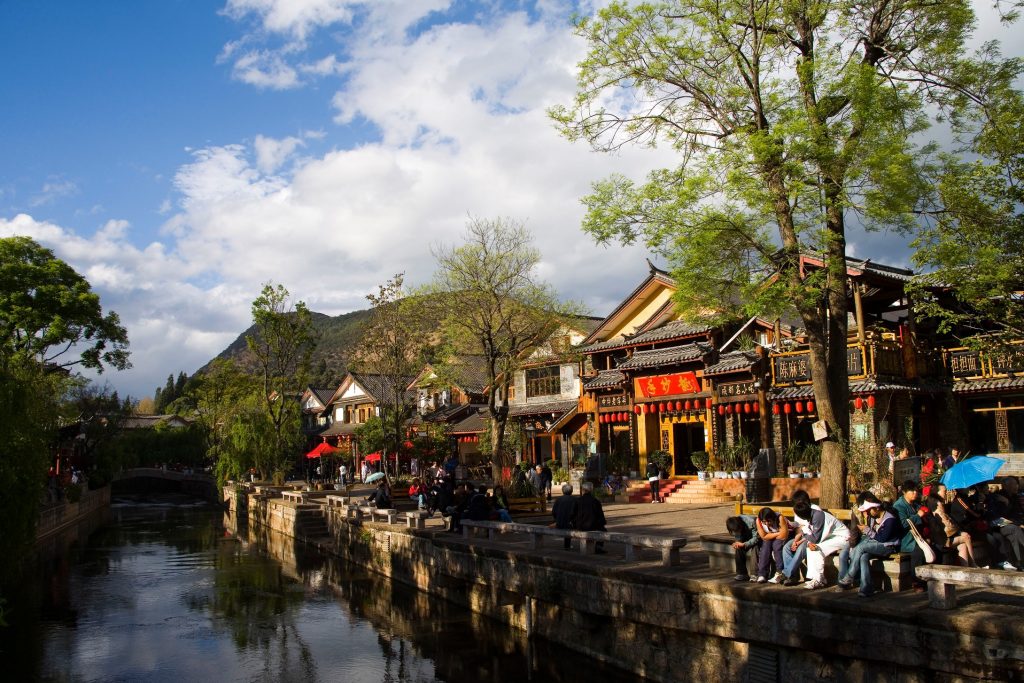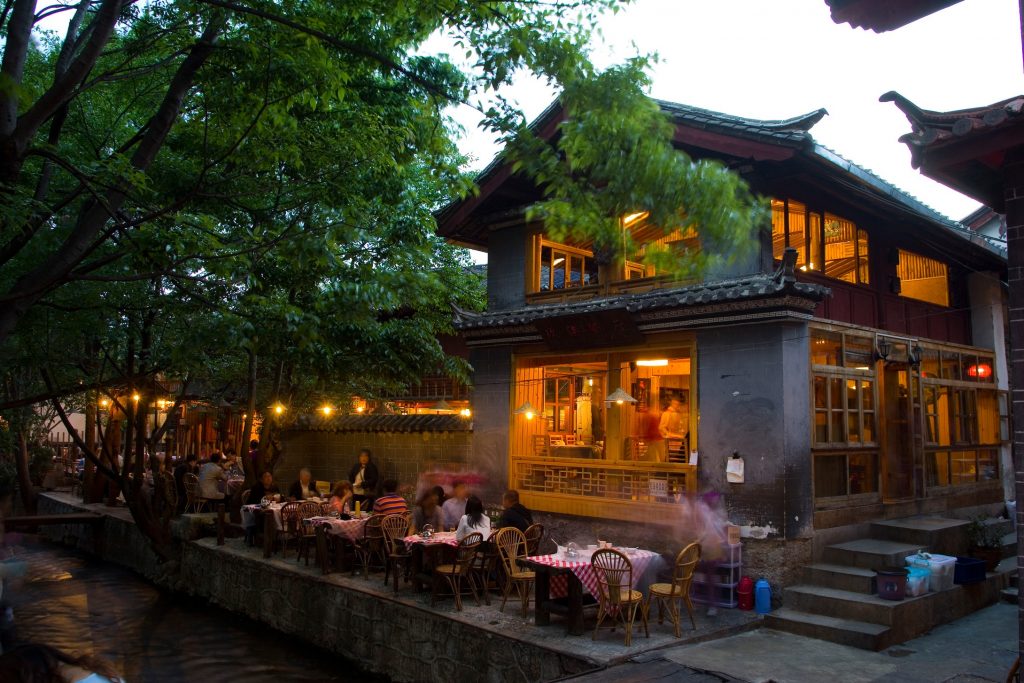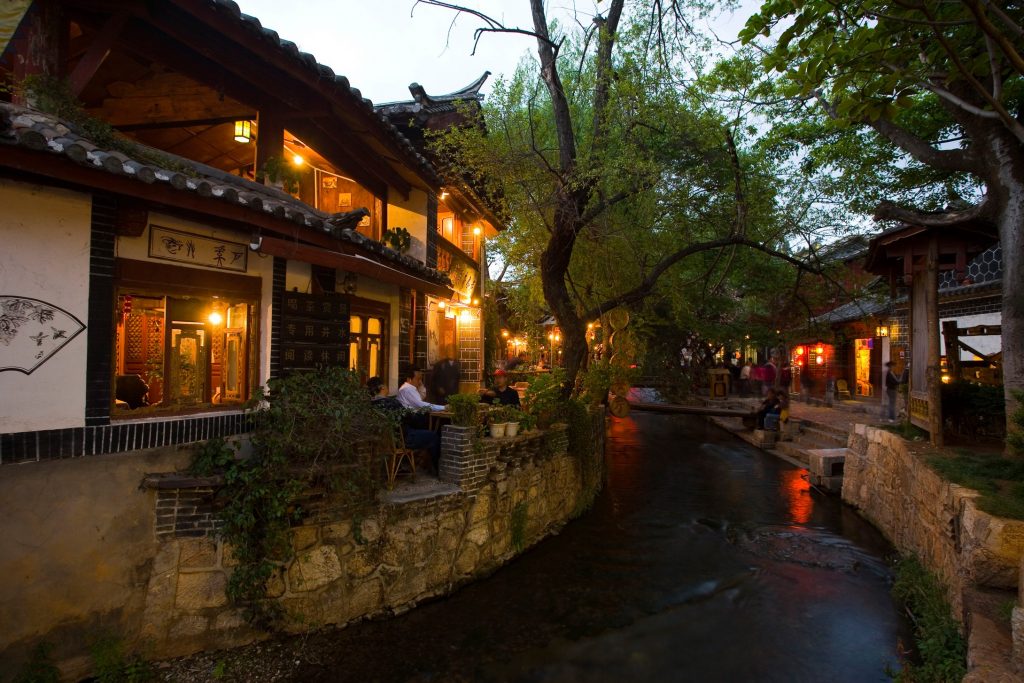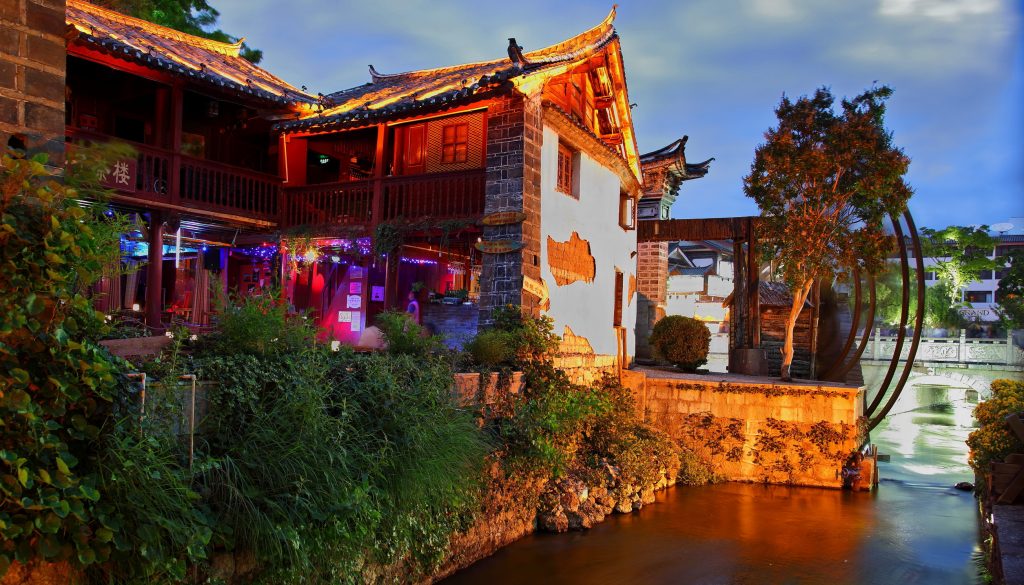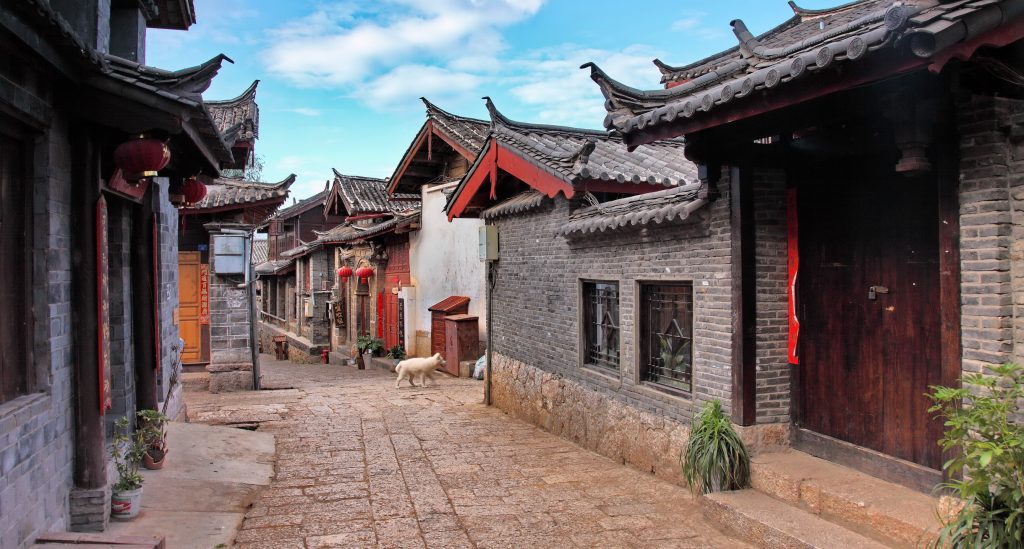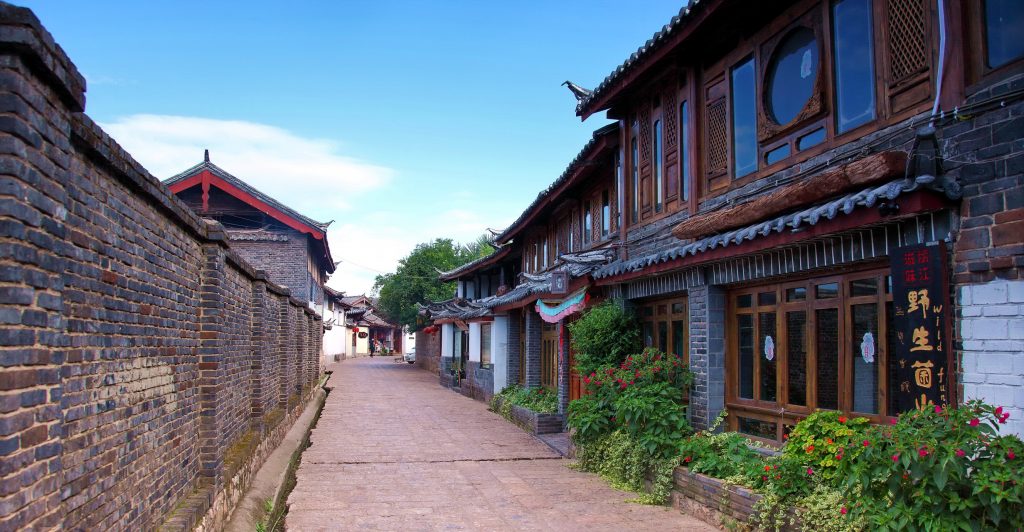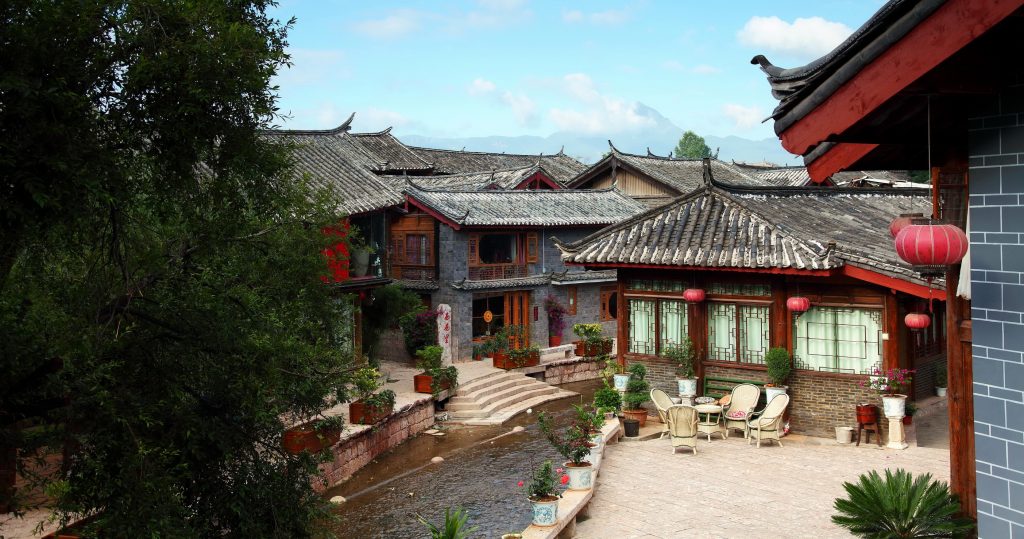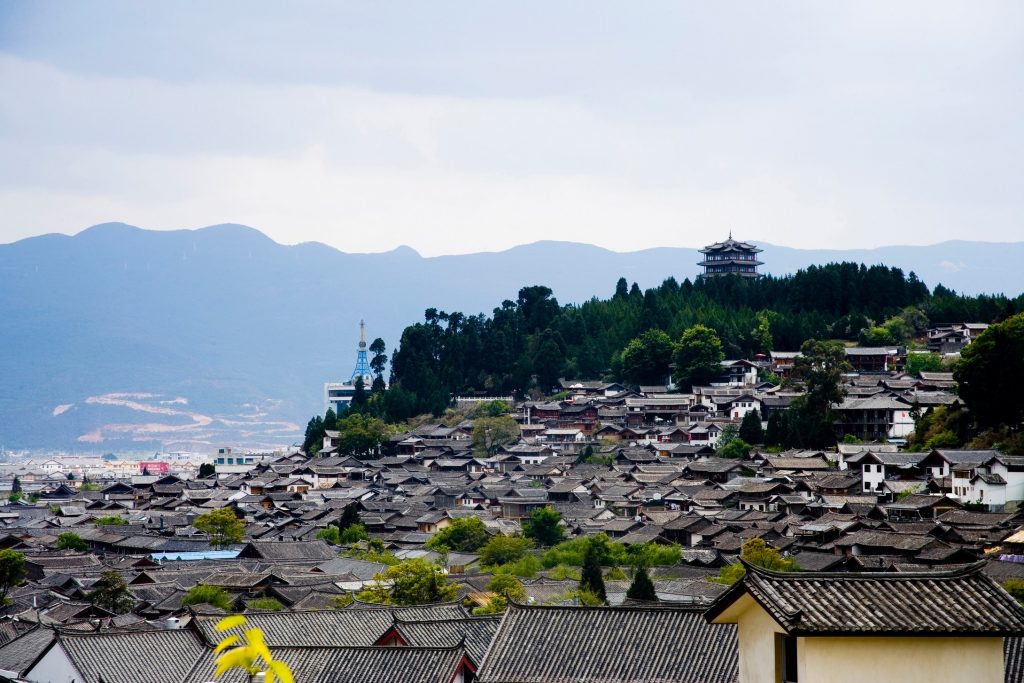Dayan Ancient Town, commonly named Lijiang ancient town, locates at downtown of Lijiang, Yunnan province. Dayan ancient town became famous in China for the Lijiang earthquake in 1997. As one of the best preserved ancient towns, Dayan Old Town, along with Shuhe Old Town and Baisha Old Town was listed as UNESCO World Heritage Site in 1997. Since then, tourists from all around the world come to Lijiang to enjoy its beauty.
Layout of Lijiang ancient town
Ancient water-supply system is effective function in today’s Lijiang ancient town, and rivers flows along every house. Ubiquitous mini bridge is the biggest feature there. Since Dayan ancient town is a confluence for trade along the “Old Tea Horse Caravan Trail” in more than 1000 years ago, the architecture incorporates the architectural feature of Tibetan ethnic, Bai ethnic and Han people. Dayan ancient town is a town built without a city wall. It is said that Lijiang was occupied by Mu Family for a long time, when Chinese character ‘Mu’ was put into a frame, that is Chinese character ‘Kun’, which means ‘besiege’. To avoid the meaning that Mu Family would be troubled by rival, therefore, Dayan ancient town built without a city wall, which made it free and open.
Geographic Location
Lijiang is surrounded by Lion Mountain in the west and by Elephant and Golden Row Mountains in the north. These mountains in the northwest shelter it from the cold wind. In the southeast there are fertile fields, which are dozens of kilometers long. Lijiang is favored with plentiful sunlight, an east wind and clear spring water, which flows in three streams and reaches every family. The streets are paved with the local stone slabs, which do not get muddy in the rainy season and are free of dust in the dry season. Many stone bridges and arches in the city were built during the Ming and Qing Dynasties and orderly roads and lanes extend to four directions from the central square. Residential houses are made of timber; most have a screen wall in front and some have a quadruple courtyard, in which local people plant many flowers.
Traditional Culture
The ancient traditional culture of the Naxi ethnic group is the Dongba culture, which is based on the Dongba Religion. Believers practice witchcraft, are skilled in medicine and the culture is passed on through literature and art.
The Dongba language has more than 1,300 separate words, which are written in primitive pictographic characters. There are more than 1,400 types of Dongba scriptures written in these characters and they take up 20,000 volumes. The scriptures cover religion, philosophy, history, local customs, literature, art, astronomy, medicine, the calendar, geography, flora, fauna, dancing, painting and music.
What to See in Lijiang Ancient Town
Sifang Street
Sifang Street is the center of Lijiang Ancient Town, covers an area of about six acres. The shape of the square is like an official seal so it was named Sifang Street (Square Street) by Tusi getting its meaning of “conquest of the neighborhood”. There is also another saying that, because the road leading to all directions making the street the terminal for clusters of people and became the logistics distribution center, so it was named Sifang Street.
Sifang Street is the heart of Lijiang. The six five-flower stone (belongs to conglomerate) street extending from the square, then each street spreads to various directions and linked together. Traffic here is very convenient. Sifang Street embodies the bazaars of the ancient town. The buildings there today are mostly of the Ming and Qing dynasty architectural styles, and the street is famous for its unique street shape, and it was praised by Chinese and foreign architectural experts as the”residence museum”.
Ancient Bridges
Above the Yuhe River system in Lijiang Ancient Town, there are 354 bridges in the town in order to sustain this convoluted water network. They are in styles of shelter bridge, stone arch bridge, slab bridge, and plank bridge. The famous bridges are Suocui Bridge, Dashi Bridge, Wanqian Bridge, South Gate Bridge, Saddle Bridge and Renshou Bridge, all built in Ming and Qing dynasties. And Dashi Bridge is the most famous bridge, which is located in 100 meters of eastern Sifang Street, built by Tusi in Ming dynasty. And because there can be seen the reflection on Jade Dragon Mountain upon the river surface, so it also called Yingxue Bridge (Reflecting Snow Bridge).
The water network of Lijiang comes from Black Dragon Pool, which is 40,000 square meters and fueled by numerous mountain springs. This waterway divides into the Central, Eastern and Western tributaries after heading to the Shuangshi Bridge. Every residence in the town is fed by this water network after it divides into conduits.
Mu Palace
Lijiang Mu Palace is the palace of Tusi Mu family in Lijiang, where the Mu Clan of the Naxi people ruled for over 400 years. It is a large complex that extends part way up the hill behind it. Since chieftain of Naxi Mu Ziyuan inherited Lijiang Tusi palace, it went through Yuan, Ming and Qing three dynasty 22 emperors for 470 years, so Mu Palace is the political and cultural center of Lijiang region. There used to be a lot of high quality paintings in the palace and finely carved wooden doors, but most were destroyed during the Cultural Revolution. In 2006, it was awarded as national AAAA scenic spot.
Wufeng Tower
Wufeng Tower was built in twenty-ninth of Wanli period in Ming dynasty (1601), and is located in the north of Black Pool Park. It is a three-storied tower of 20 meters high, and it is Yuquan architectural structure with 24 overhanging eaves just like five colorful phoenixes spread the wings, so it was called Wufeng Tower (Five Phoenixes Tower).
Kegongfang
The impressive Imperial Examination Archway, or Kegongfang, is a three stories building and situated on the west side of Sifang Street. This archway has the Central and Western Rivers running along its sides. And it is said that Kegongfang was built in Qing dynasty Daoguang period.
Naxi Ancient Music night show
Naxi ancient music is regarded as soul of Lijiang, and known as ‘living fossil of music’. The Naxi ancient music has 3 features, that is: the piece of music is ancient, the music instrument artists play is ancient, the artists play on the stage are old. Most of music lyrics originate from poetry of Tang Dynasty (618AD-907AD) or Song Dynasty (960AD—1279AD). And the music pieces combine the original charm of ancient music and popular tune of Lijiang, which you can appreciate strong Naxi style. When you travel to Dayan ancient town, you can’t miss the Naxi ancient music night show at 8:00p.m.
Travel Tips
The Best Time to Travel Lijiang Ancient Town
The four seasons scenery is different in Lijiang city, visiting to Lijiang in different time will have different feelings and experiences. Lijiang is a plateau type southwest monsoon climate, warm in winter and cool in summer, large parts of Lijiang whose annual temperature difference is small, but temperature difference between day and night is quite large.
April is the most beautiful time to visit Lijiang Ancient Town and Jade Dragon Snow Mountain. During this time there is less tourists and the climate is suitable that winter snow does not disappear and spring is awakening in the air. It is recommended to bring T-shirt, sweater, coat, sunscreen and rain gear.
What to pack
Ultraviolet ray of Lijiang is stronger, uv protection sunglasses and sunscreen is necessary, also can bring hat or large size scarf to prevent sun; If you want to hike, remember to bring gloves (use to ride a horse and prevent frostbite) and warm light shoes, in addition, the portable backpack, mask, and basic skin care products, good quality luggage and camera can make a trip to Lijiang more wonderful.
Bank
There are many banks and ATM in Lijiang Ancient Town, and you can find BOC (Bank of China), ICBC (Industrial and Commercial Bank of China), ABC (Agricultural Bank of China) and so on in the East Street, it is very convenient to withdraw money. But if it is in Shigu Ancient Town or Tiger Leaping Gorge where away from the town of scenic spots, it is the best to prepare cash in advance.
Network
Some inns in Lijiang Ancient Town and Lugu Lake basically provides network, but if it is in Tiger Leaping Gorge, Laojun mountain and Stone Town such a remote place, even live in the inn, there is also no internet.
Internal Transport in Lijiang
Lijiang public bus fee is 1 RMB commonly, and it is convenient to take bus to some attractions. The most of public buses in Lijiang are running from 07:00 to 21:00, but there also some buses depart at 06:30.
Taxi
There are many taxis in Lijiang, and the starting fare in the evening is higher than in the daytime. The main taxi stands are near the Yulong Bridge, and Lijiang Dongba International Communication Center. Some taxi drivers can provide car rental service to Spruce Meadow, Yufeng Temple and other attractions, and the price can be discussed with the driver.
Tips: some unlicensed taxi will be waiting for near the scenic spot, airport, hotel, diddle tourists trust sell some scenic spots and accommodation place, to earn the high commission, need to be careful deceived.
Bicycle
There are some bicycle rental agencies that can provide bicycle rental service in the Red Sun Square in the north gate of Lijiang Ancient Town. In addition, there are also some youth hostels and inns provide bicycle rental service, rental price is a bit different. Many tourists choose to rent a bike riding from Lijiang Ancient Town to Shuhe Ancient or Baishai Ancient Town. Actually from Lijiang Ancient Town to Shuhe Ancient Town is about 8 km, all the way is asphalted road and the road condition is good.
How to Get to Lijiang Ancient Town
Lijiang Ancient Town is located in the center of Lijiang city, after arriving Lijiang city tourists can transfer bus to Lijiang Ancient Town. Lijiang Airport is about 28 km away from the county, there is shuttle bus special line going back and forth between the airport and the county. Lijiang Railway Station is about 4.8 km away from Lijiang Ancient Town, after getting out of the railway station tourists can take public bus go to ancient town directly. And in the Lijiang city, there are 13 long-distance bus stations, and basically there are public buses in those long-distance bus stations that can reach Lijiang Ancient Town.
Idleness is the pace of life in Dayan ancient town. Walking around aimless at the slate and cobble road, haunting music floating from different directions, you will enjoy this way to kill your time in Dayan ancient town.

